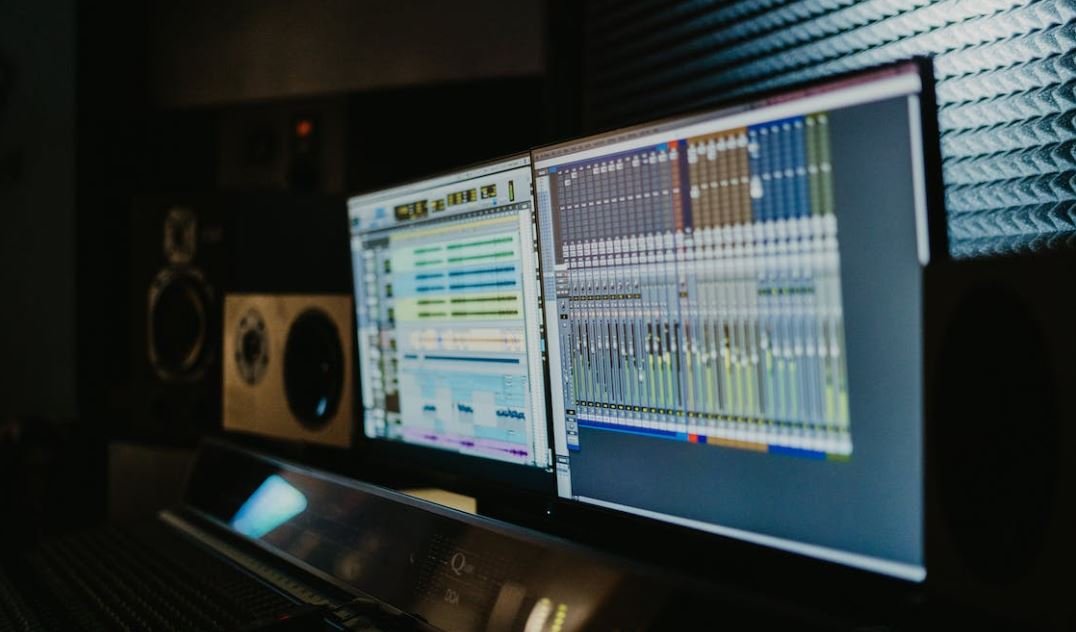Deepfake Video Call
With the advancements in artificial intelligence (AI), deepfake technology has become a growing concern in today’s digital world. Deepfake video calls are a type of synthetic media that use deep learning algorithms to manipulate or create highly realistic fake videos of individuals. These videos can be indistinguishable from real footage and have the potential to deceive and manipulate people.
Key Takeaways:
- Deepfake video calls employ AI technology to create highly realistic fake videos.
- These videos can be used to deceive and manipulate individuals.
- Deepfake technology poses significant ethical and privacy concerns.
- It is crucial to be aware of the potential risks associated with deepfake video calls.
While the concept of deepfake video calls may seem like something out of a science fiction movie, it is a reality that individuals and society need to address.
The Rising Threat of Deepfake Video Calls
Deepfake video calls have the potential to cause significant harm by spreading misinformation, damaging reputations, and manipulating public opinion. The technology behind deepfakes is becoming increasingly accessible and sophisticated, allowing individuals with malicious intent to create convincing fake videos of anyone, including public figures and influential individuals.
Imagine receiving a video call from someone you trust, only to later discover that it was a deepfake.
Being able to identify deepfake video calls is crucial to combating their harmful effects. However, as the technology improves, so does the difficulty in distinguishing between real and fake videos. This poses a challenge for both individuals and institutions seeking to protect themselves from deepfake-related threats.
The Ethics and Privacy Concerns
Deepfake video calls raise significant ethical and privacy concerns. The manipulation of someone’s appearance and voice without their consent is a violation of personal privacy and autonomy. It can lead to the dissemination of false information, defamation, and the erosion of trust in digital communication platforms.
What if deepfake video calls are misused to simulate confessions or implicate innocent individuals in crimes?
Additionally, deepfake video calls can be used for impersonation, cyberbullying, and harassment. This technology has the potential to exacerbate existing issues such as revenge porn, online scams, and social engineering attacks. It becomes essential to develop robust countermeasures to detect and prevent the misuse of deepfakes.
Data Protection and Legal Implications
| Concerns | Implications |
|---|---|
| Data Privacy | Increased risk of personal information exposure. |
| Identity Theft | Potential for impersonation and fraudulent activities. |
| Legal Framework | Need for regulations to protect individuals and organizations from deepfake-related harm. |
As the use of deepfake video calls becomes more prevalent, privacy laws and regulations must adapt to safeguard individuals’ rights and prevent misuse.
Combating Deepfake Video Calls
Addressing the challenges posed by deepfake video calls requires a multi-faceted approach involving technology, education, and legislation. Here are some strategies to combat deepfake-related threats:
- Develop advanced detection algorithms to identify and flag deepfake videos.
- Enhance media literacy education to educate individuals on how to critically assess the authenticity of videos.
- Establish clear legal frameworks to hold those responsible for creating and spreading malicious deepfake content accountable.
Conclusion
As deepfake video call technology continues to evolve, the potential for abuse and harm grows. It is crucial for individuals, organizations, and governments to stay vigilant and proactive in addressing this issue. By combining technological advancements, education, and legislation, we can mitigate the risks associated with deepfake video calls and safeguard trust in our digital interactions.

Common Misconceptions
Deepfake Video Call
People often have certain misconceptions when it comes to deepfake video calls. Let’s address some of them:
1. Deepfake technology is only used for malicious purposes.
- Deepfake technology can be used for entertainment and artistic purposes.
- It can create realistic visual effects and enhance virtual reality experiences.
- Deepfake videos can be used for training and educational purposes, such as simulating scenarios for medical professionals.
2. Detecting deepfake video calls is easy and foolproof.
- As deepfake technology evolves, it becomes increasingly challenging to detect altered videos.
- New techniques are constantly being developed to make deepfakes more realistic and difficult to distinguish from real footage.
- Advanced detection methods, such as analyzing biometric data or using AI algorithms, are required to detect deepfake videos in some cases.
3. Deepfake video calls are always used to deceive or manipulate others.
- While deepfakes can be used maliciously, not all deepfake video calls have malicious intentions.
- Deepfake technology can be leveraged for harmless pranks or entertainment purposes among friends and family.
- In some cases, deepfake videos can be used for impersonations in movies or TV shows without any harmful intentions.
4. Deepfake video calls are only created by skilled professionals.
- With the availability of easy-to-use deepfake apps and software, anyone with basic technical knowledge can create deepfake videos.
- No extensive programming or editing skills are necessary to manipulate videos using some of the user-friendly tools available today.
- Non-technical individuals can simply use pre-trained models and AI algorithms to create convincing deepfake videos.
5. Deepfake video calls are undetectable and cannot be distinguished from real calls.
- While deepfake videos can be highly convincing, they often exhibit subtle artifacts or inconsistencies that careful analysis can detect.
- Experts are continuously working on developing better detection techniques to identify deepfake videos and distinguish them from authentic ones.
- Improvements in technology and advancements in AI algorithms are helping in the fight against deepfake video manipulation.

The Rise of Deepfake Technology
Deepfake technology has become increasingly sophisticated in recent years, allowing for the creation of highly realistic and convincing fake videos. These videos can be manipulated to show individuals saying or doing things they never actually did. This article explores some interesting points about deepfake video calls and their implications.
The Potential Risks of Deepfake Video Calls
Deepfake video calls pose numerous risks, including the potential for fraud, blackmail, and misinformation. Here are some intriguing facts about these risks:
Famous Figures Targeted by Deepfake Video Calls
Even well-known individuals are not immune to the threat of deepfake video calls. The following table showcases some noteworthy cases:
Impact of Deepfake Video Calls on Politics
Deepfake video calls have the potential to disrupt political landscapes. Here are some examples of their impact:
Age and Gender Disparities in Deepfake Technology
The use of deepfake technology is not evenly distributed across age groups and genders. The table below presents some interesting statistics:
Deepfake Video Calls and Privacy Concerns
Privacy is a major concern when it comes to deepfake video calls. The following table highlights some key privacy issues associated with this technology:
Deepfake Video Calls and Cyber Crime
Deepfake video calls have provided new avenues for cybercriminals to carry out their illegal activities. The table below showcases some surprising facts:
Media Consumption Habits and Deepfake Video Calls
The prevalent use of social media and online platforms has contributed to the spread of deepfake video calls. The following table illustrates the impact on media consumption habits:
Regulatory Efforts to Combat Deepfake Video Calls
Recognizing the potential dangers posed by deepfake video calls, various regulatory efforts have been undertaken. Here are some notable initiatives:
The Future of Deepfake Video Calls
As technology continues to advance, deepfake video calls are expected to become even more realistic and indistinguishable from genuine ones. The table below explores some potential future developments:
Deepfake video calls have emerged as a concerning and fascinating aspect of modern technology. Their impact on various aspects of society, from privacy to politics, cannot be overlooked. It is crucial to stay aware of the potential risks and actively seek ways to differentiate between real and fake videos in order to navigate this increasingly complex media landscape.
Frequently Asked Questions
What is a deepfake video call?
A deepfake video call refers to an artificial intelligence technique that is used to manipulate or replace the identity of a person in a video call with someone else’s using algorithms and machine learning.
How does a deepfake video call work?
A deepfake video call works by training a machine learning model on a large dataset of images and videos of the target person. This model then uses facial recognition and image manipulation algorithms to alter the target person’s appearance in real-time during the video call.
What are the risks associated with deepfake video calls?
Deepfake video calls pose several risks, including identity theft, fraud, misinformation, and the potential for malicious actors to impersonate someone else during video conferences or online interactions.
How can I detect if a video call is a deepfake?
Detecting deepfake video calls can be challenging, but some signs to look out for include unnatural facial movements, inconsistencies in video quality, mismatched audio and video, and subtle visual artifacts. However, advanced deepfake technologies may make it more difficult to detect.
Are there any legal implications of using deepfake video calls?
The legal implications of using deepfake video calls vary across jurisdictions. In some cases, deepfake video calls may violate privacy laws, intellectual property rights, or be considered as a form of harassment or defamation. It is advisable to seek legal advice and be aware of the specific laws in your jurisdiction.
Can deepfake video calls be used for benign purposes?
While deepfake video calls are commonly associated with malicious intent, there are potential benign uses such as enhancing video conference experiences with virtual avatars or providing entertainment options. However, ethical considerations and consent are crucial in any deepfake video call application.
What measures can be taken to protect against deepfake video calls?
To protect against deepfake video calls, it is important to use secure communication platforms, enable multi-factor authentication, implement strong passwords, verify the identity of participants in video calls, and stay updated on deepfake detection technologies.
Is it possible to remove a deepfake video call once it has been created?
Removing a deepfake video call can be challenging once it has been created and shared. With the rapid advancement of deepfake technologies, it is increasingly difficult to completely remove deepfake content from the internet. This highlights the importance of prevention and awareness.
What is being done to address the issue of deepfake video calls?
Various organizations, researchers, and technology companies are actively working on developing detection tools and countermeasures against deepfake video calls. Additionally, legal frameworks are being explored and developed to address the potential risks and consequences associated with deepfake technology.
Is it possible to create deepfake video calls with any two people?
In theory, it is possible to create deepfake video calls with any two people, provided that sufficient data of both individuals is available for training a deepfake model. However, it is important to note that creating and sharing deepfake content without proper consent can have serious ethical and legal implications.




